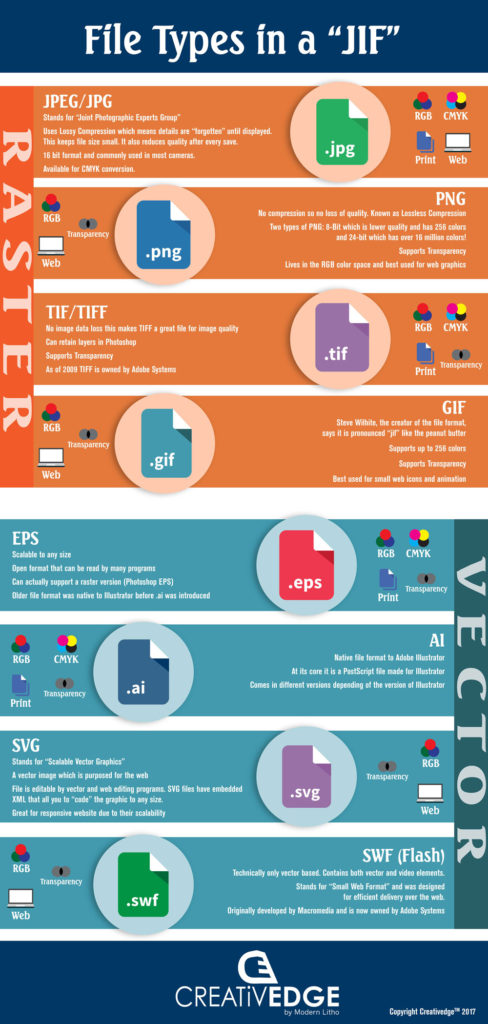Image File Types in a “JIF”!
We’ve all see them. In the design world we all get the same knot in our stomach. Let’s paint the picture. You have been waiting all day for the image file to come in. Patiently keeping a watchful eye on your inbox, hoping you get the file before closing time on a Friday afternoon. Then, there it is. The joyful “ding” of your inbox. You open the email and find the file you have been waiting for. Almost instantly you feel the knot and your enthusiasm turns to frustration. There it is the dreaded .gif file extension. The questions immediately start going through your head like, “Great, where did they get this?” It always seems to come with a lovely personal note, “This is all we have, will this work?”
In the design world we have all learned how to make an omelet out of toast, butter and few packets of instant oatmeal. We have been called “miracle workers” and the “savior of the day.” We have learned to manipulate files to fit the needs of our clients and most of the time the results are pretty good.
Even when we get files like PNGs or GIFs that are low res and downloaded from some random website, they do still have a purpose. Granted I’ve received high res PNGs before and it is a welcomed surprise. But high res or not, a PNG belongs on the web. You might be asking yourself, “If it’s a high res PNG then why can’t I use it for my design?” If you are designing a website then by all means go for it! PNGs, along with GIFs, both live in the RGB world and don’t get along well with CMYK (a.ka. print) without some color issues. This is because they were originally created to live on the web where they will only be viewed on a screen. If the main reason for using these files is for the transparency compatibility there are other files you can use to achieve the same effect.
Below you will find a helpful infographic for some of the most common file types we encounter. Even though PNGs can be a headache, they work really great for web design and we all know that GIFs need to stick to looping our favorite fail videos from YouTube. Other file types like JPEGs and TIFFs allow for CMYK conversion and, most of the time, are more widely accepted for graphic design purposes.
In a perfect world all of our clients would have a firm understanding of these file types, but sadly such a world doesn’t exist. The best we can do is educate ourselves as much as we can with how these files work and their intended purpose in life. Remember things could always be worse; they could have mailed you a business card to scan.
Source: www.creativedge.training

